How to Cook With Thyme
on Sep 29, 2021, Updated Oct 03, 2024
This post may contain affiliate links. Please read our disclosure policy.
The best way to get those little leaves off thyme stems and into your recipes!
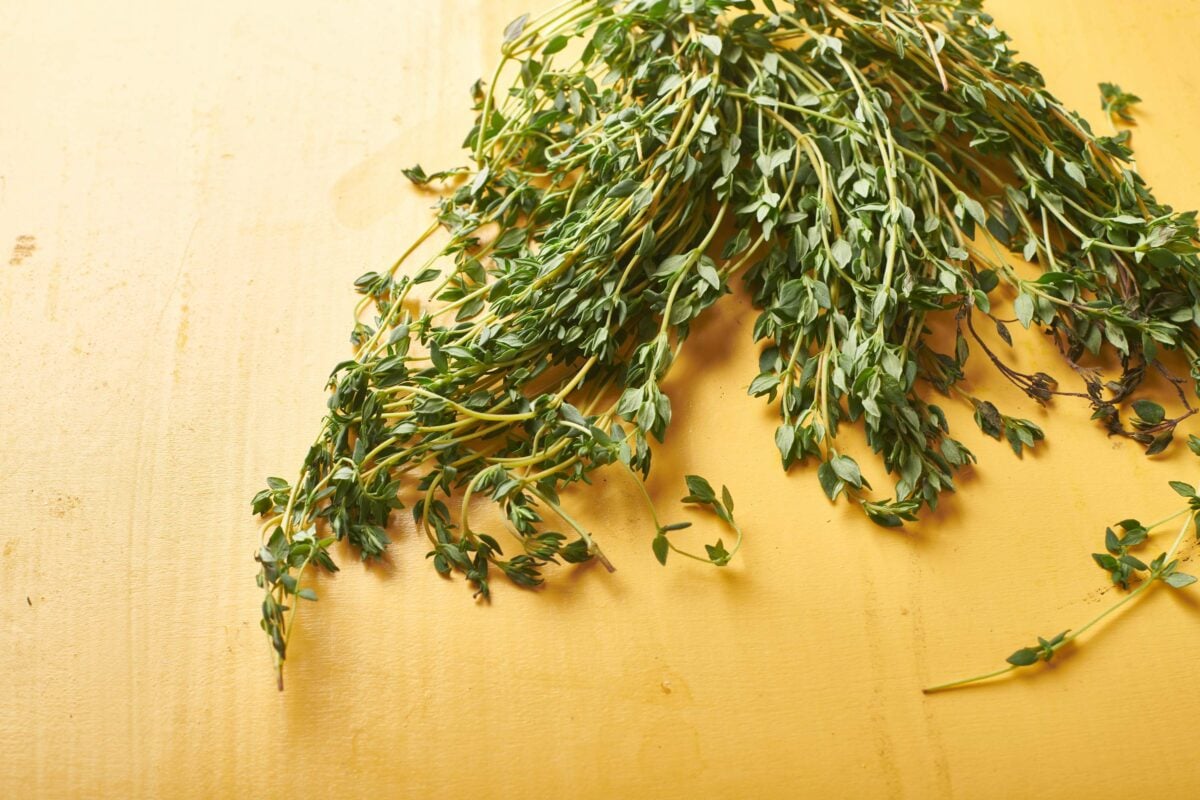
Thyme is a very popular herb, and for good reason. The hearty sprigs yield tiny, delicate leaves that can almost melt into a sauce or stew. Thyme’s woodsy flavor is super versatile and is delicious in recipes spanning all four seasons. You can stir fresh thyme into a Simple Beef Stew or incorporate it into the creamy sauce of some Cheesy Au Gratin Potatoes during the colder months. Or, in the summer, use it in uncooked, sprinkled over sliced tomatoes or grilled vegetables. Fresh thyme is great in marinades and dressings such as Citrus, Honey, and Thyme Vinaigrette.
No matter how you use it, thyme is a classic herb for a reason. It also makes a lovely garnish for everything from roasted chicken breasts to a graze board. If you’re looking for the scoop on more fresh herbs, get cooking tips for Parsley, Oregano, Mint, and Rosemary!
By signing up, you agree to our Privacy Policy.
What's In This Post?
- What Is Thyme?
- What Does Thyme Look Like?
- What Does Thyme Taste Like?
- How to Substitute Dried Thyme for Fresh Thyme
- Substituting Other Herbs for Thyme
- Where To Find Thyme
- How to Choose Fresh Thyme
- How To Prepare and Cook with Thyme
- How to Remove Thyme Leaves from the Stem
- How to Chop Fresh Thyme
- How to Cook with Fresh Thyme
- How to Store Thyme
- 10 Thyme Recipes
- More Recipes With Fresh Herbs
- How to Chop Thyme Recipe

How to Cook with Thyme: Here’s everything you need to know about how to buy, store, prepare, and cook with fresh thyme. Plus how to chop thyme leaves and 10 fresh thyme recipes.
What Is Thyme?
Thyme is an herb, popular in a number of countries and cuisines, but we most often think of it in conjunction with European cooking, especially the cuisine of the Mediterranean: Italy and France in particular. (Apparently, ancient Romans considered the herb a symbol of bravery and strength and wore it pinned to their garments before battle — hard to imagine an herb sprig inspiring fear on the battlefield, but kind of fun to envision these burly guys racing into combat with a bit of an herbal aroma floating around them.)
In its dried form, it is the main ingredient in the classic French herb combination Herbes de Provence as well as Za’atar, which is a ubiquitous Middle Eastern spice blend.
What Does Thyme Look Like?
Fresh thyme has small leaves that grow in clusters on very thin stems. The leaves in a bottle or package of dried thyme are even smaller, as the already little leaves shrink when they are dried.

What Does Thyme Taste Like?
The taste is very concentrated and herbal in flavor, with sharp, grassy, woodsy, and floral notes. Dried thyme and fresh thyme taste nearly identical, but dried thyme (like all dried herbs) is more potent than fresh (see substituting dried thyme for fresh below). There is also a variety of thyme called lemon thyme, which, as you would expect, has a lemony undertone.
How to Substitute Dried Thyme for Fresh Thyme
Dried thyme can be substituted for fresh in many recipes, especially any recipes that are cooked. Use 1 teaspoon of dried thyme for 1 tablespoon fresh, for a 1:3 ratio of dried to fresh thyme.
For recipes and dishes that call for fresh thyme that is not cooked, sometimes it’s ok to sub in dried, sometimes not. The best rule of thumb is to think about how the herb is being featured in the food. If it’s blended into a marinade, for instance, dried is probably fine, but if you are sprinkling it over a bruschetta, then pick another fresh herb if you don’t have fresh thyme, or possibly just skip it.
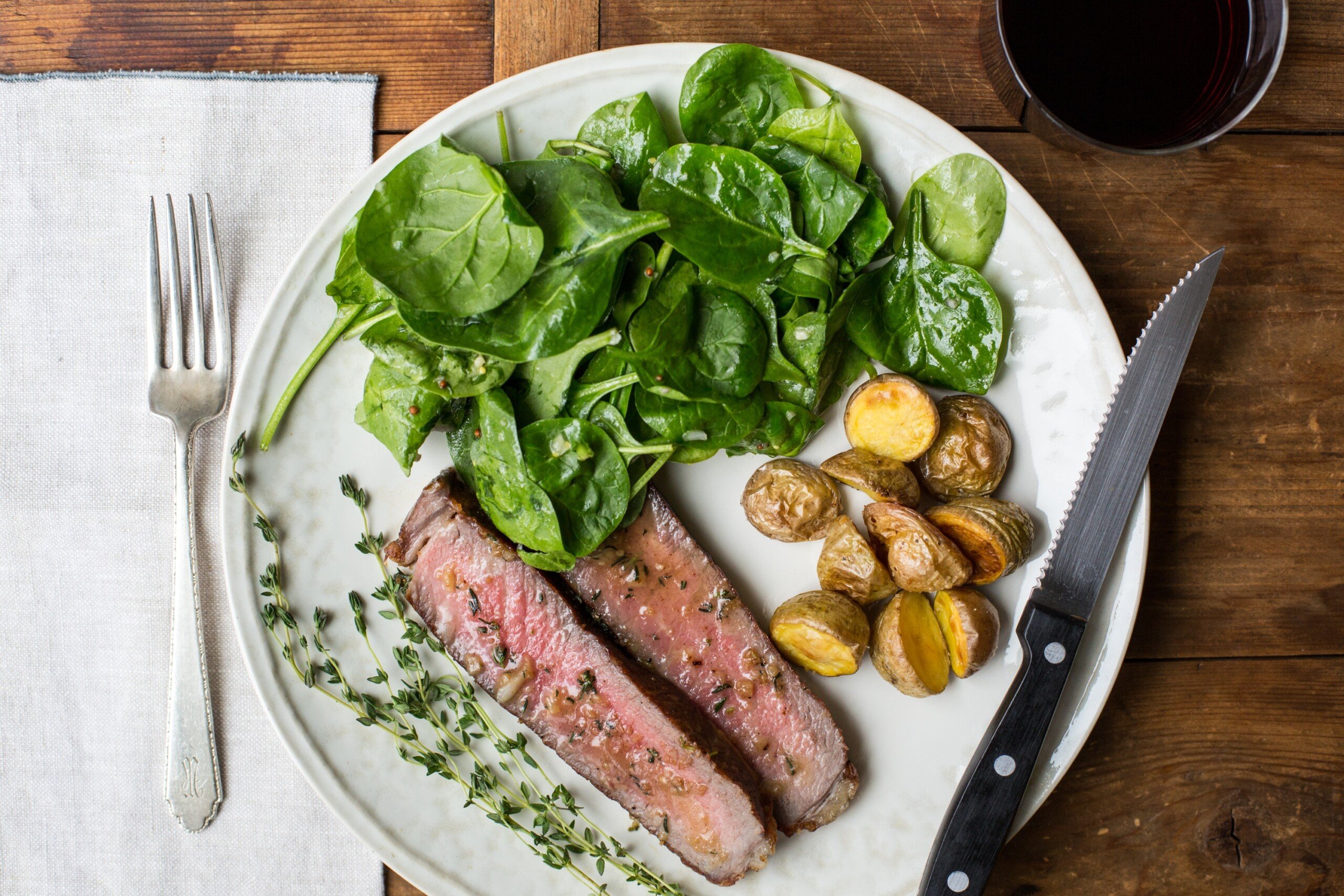
Substituting Other Herbs for Thyme
Thyme’s flavor is distinctive, but fresh rosemary, sage, basil, oregano, or marjoram can often be substituted for it in various recipes because their flavor usually is compatible with the same kinds of recipes thyme is used in. Rosemary and sage are a bit stronger in flavor, so you may want to use a bit less and taste and adjust as you like.
Where To Find Thyme
Fresh thyme is found in the fresh produce section of supermarkets, and it’s very easy to grow in an herb garden or container in the kitchen for year-round use. Dried thyme is found in the baking aisle with the other dried herbs and spices.
How to Choose Fresh Thyme
Fresh thyme may be sold in bunches (particularly at farmers markets) or in small plastic containers. See below for how to store it once you bring it home. Avoid bunches with browned leaves or leaves that look shriveled, dried, or damp.
How To Prepare and Cook with Thyme
There are so many uses for thyme! Thyme (fresh and dried) pairs well with meats of all kinds, including stews, soups, eggs, pastas, vegetables, and beans. I never make a roast chicken without thyme. Fresh thyme is also nice with fish and seafood. Think of thyme when you are making lasagna, sautéing or roasting vegetables, and making any sort of potato dish. It’s also perfect for all kinds of chicken, pork, lamb, or beef recipes. Cooking with thyme adds a slightly floral, woodsy note to any dish.
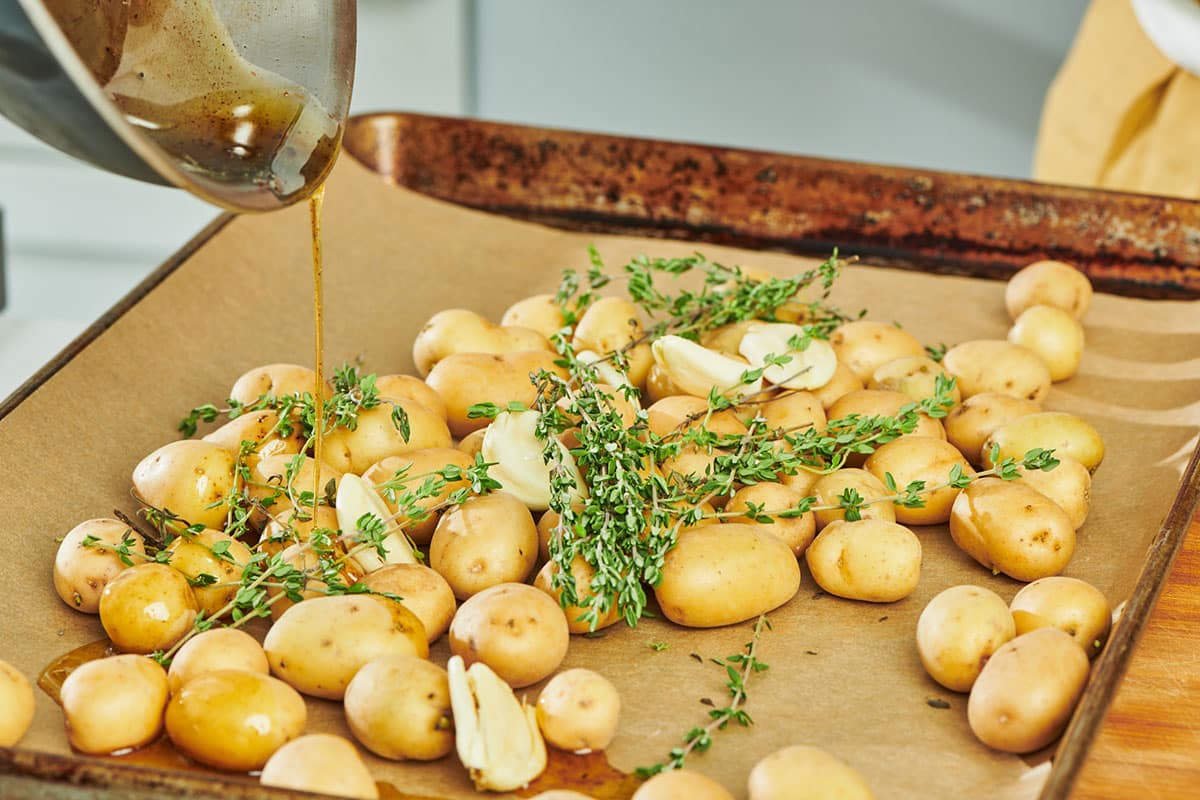
If a recipe calls for a fresh “sprig” of thyme, the leaves and stem should be kept intact. When added to recipes in this way, the leaves usually fall off during cooking, and the stem can be removed prior to serving.
If a recipe calls for a teaspoon or another measurement of “fresh thyme,” the leaves need to be pulled off of the stem. However, once you start cooking with thyme, you’ll be able to judge whether you can get away with adding sprigs and removing the stems later.
How to Remove Thyme Leaves from the Stem
To remove the leaves from the stem, slide your fingers down the stem while holding the top, which will pull off the leaves as you go. (See below for more detailed instructions.) Fresh thyme leaves are so small that they often do not need to be chopped.
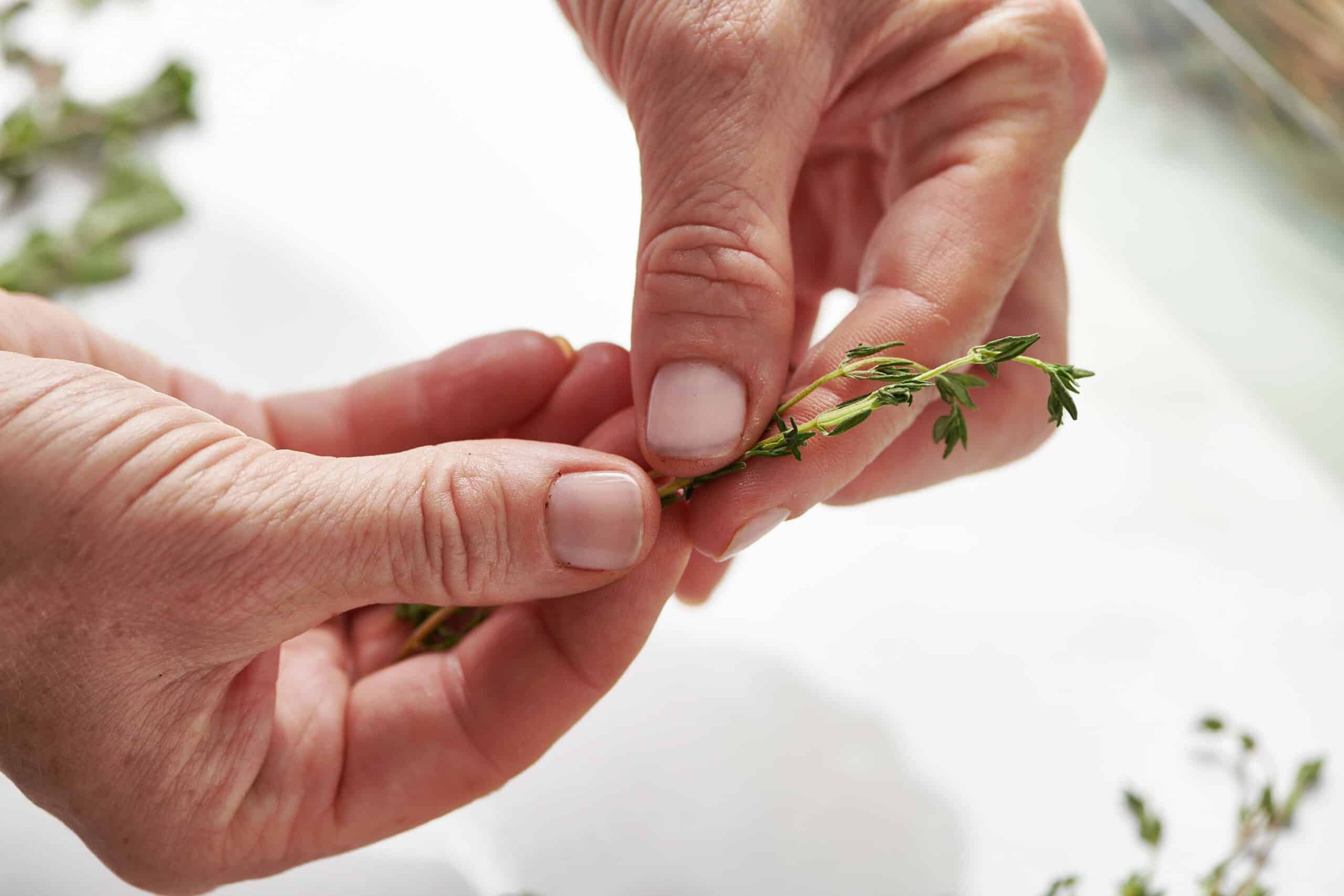
How to Chop Fresh Thyme
To chop or mince fresh thyme leaves, all you need is a cutting board and a knife. See below for detailed instructions. It’s okay if some smaller, thinner pieces of stem are included with the leaves, but avoid any thicker, woody stems.
Alternatively, you can use an herb stripper to remove the leaves from the stems. Insert the bottom of the thyme sprig stem into a hold in the herbs stripper that’s slightly wider than the stem. Pull the herb sprig through the stripper gently but firmly. The leaves should come off as you pull the stem through.
How to Cook with Fresh Thyme
Unlike some other more delicate fresh herbs, fresh thyme can be added early on in the recipe. The flavor will continue to develop as the dish cooks, rather than dissipating as with some other herbs.
How to Store Thyme
Fresh thyme will last for at least 1 week if you wrap it in a slightly damp paper towel and then place the bundle in a sealable plastic bag or container. Place it in the crisper drawer for even better storage conditions (it’s not as cold there compared to the back of the fridge).
Dried thyme, like all dried herbs, should be stored in a sealed container in a cool dry place.
10 Thyme Recipes
Here are some recipes that use fresh or dried thyme.
Chopped Salad with Chicken, Tomatoes, and Lemon Thyme Dressing
Ribeye Steaks with Thyme-Garlic Butter
Eye of Round Roast Beef
Red Salad with Citrus, Honey, and Thyme Vinaigrette
Baked Bone-In Chicken Breasts
Easy Classic Potato Salad
Black Lentil and Butternut Squash with Provencal Vinaigrette
Mediterranean-Braised Lamb Shoulder Chops
Traditional Beef Stroganoff
Duck Fat Roasted Potatoes
More Recipes With Fresh Herbs
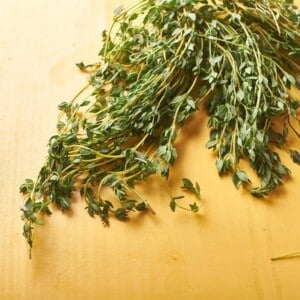
How to Chop Thyme
Equipment
- 1 herb stripper (optional)
Ingredients
- 8 sprigs fresh thyme
Instructions
- Run your fingers down the stems, against the growth of the leaves to remove as many leaves as possible. Pluck any remaining leaves from the stems. It's ok if some smaller, thinner pieces of stem are included with the leaves, but avoid any thicker, woody stems.
- Place the leaves on a cutting board. Use a sharp chef's knife to chop the leaves, rocking the knife back and forth, until the leaves are chopped as coarsely or as finely as you wish for your recipe.
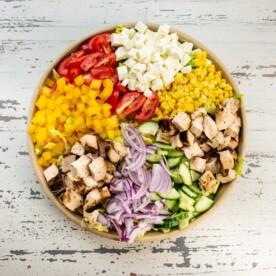
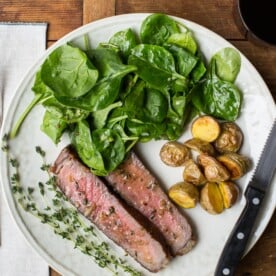
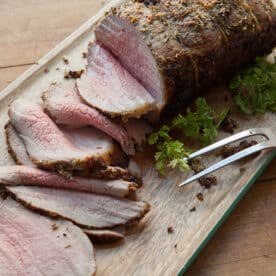
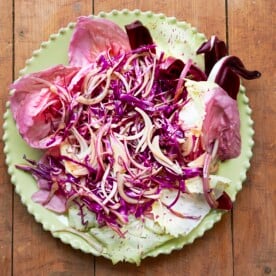

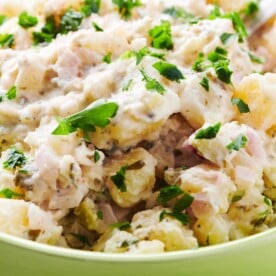
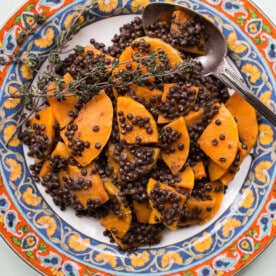


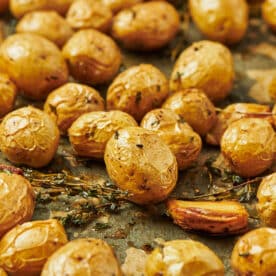
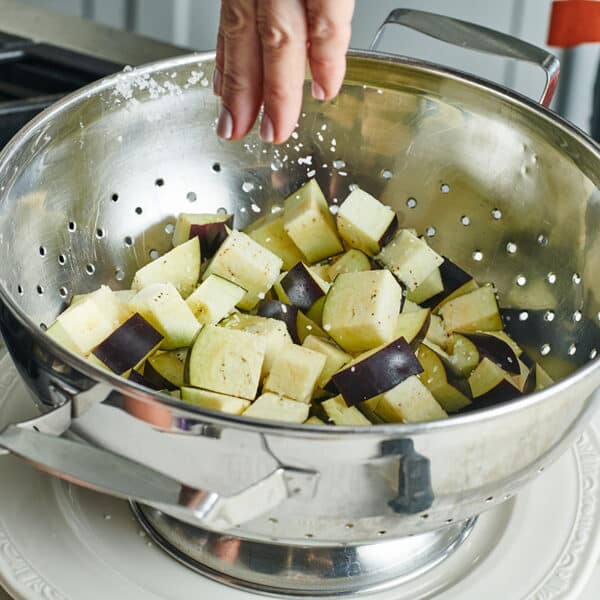
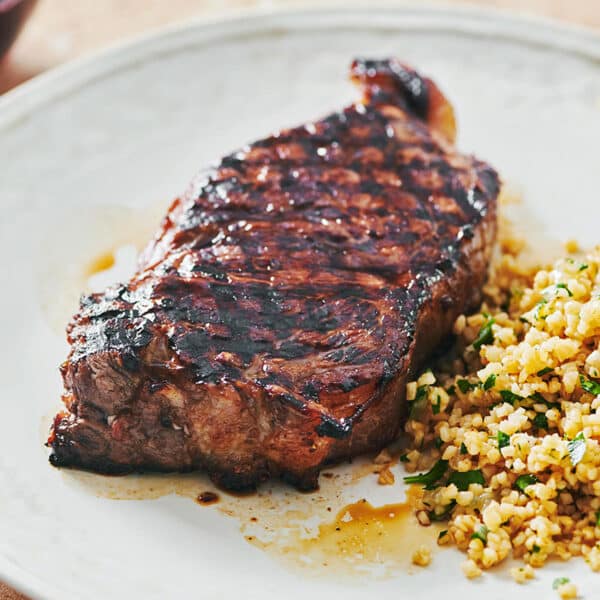

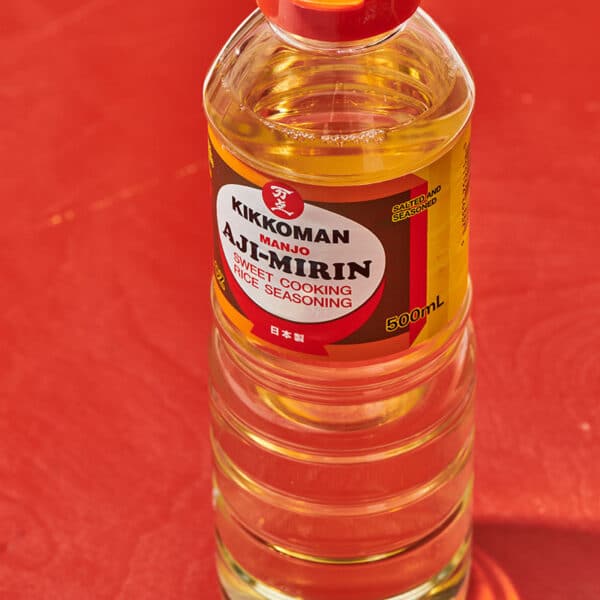









Great advice on dealing with a small leaf herb!